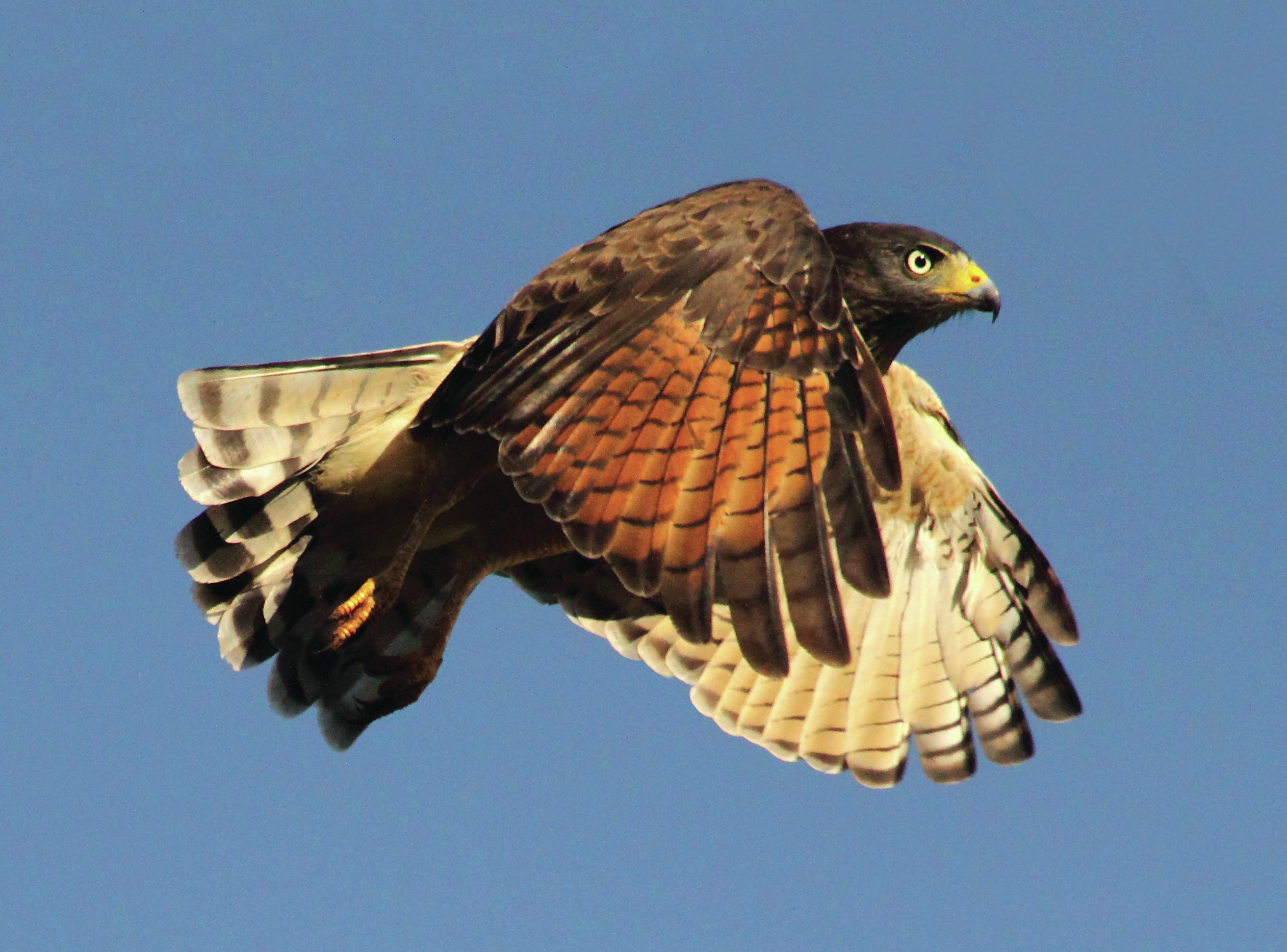
The off-road vehicle is making its way through the reserve, churning through the sand of the dirt road, which is lined by thick subtropical forest. As we turn a corner, a sharp-beaked, powerful-looking bird appears in a tree. We pause to admire it as it surveys us before taking flight and soaring away. The bird is a roadside hawk (Rupornis magnirostris), standing more than 30 cm tall, a magnificent bird of prey at the top of its food chain.
We are in Paraguay in South America, in Reserva Natural Laguna Blanca — home of the conservation organisation Para La Tierra (see www.paralatierra.org). The scientists and volunteers of Para La Tierra study the wildlife that lives here, and work to ensure that these species stay healthy and numerous enough to maintain permanent populations. This place is special — it includes environments as diverse as subtropical rainforest and cactusdotted, grassy savannas. These environments support an amazing biodiversity — birds, mammals, reptiles, amphibians, arthropods and plants. Unfortunately, such habitats are becoming increasingly rare in South America, owing to the removal of the natural forest(deforestation) by local people who need the land for agriculture and ranching. As a result, many animals and plants are threatened with extinction.
Your organisation does not have access to this article.
Sign up today to give your students the edge they need to achieve their best grades with subject expertise
Subscribe




